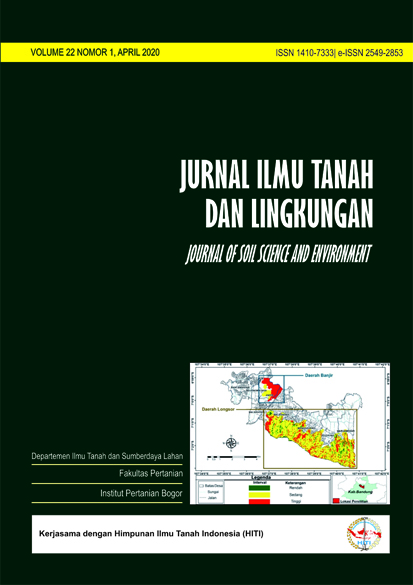Tofu Wastewater Potency for Generating Electricity Using Three Models of Microbial Fuel Cell (MFC)
Potensi Limbah Tahu untuk Menghasilkan Listrik pada Tiga Model Sistem Microbial Fuel Cell (MFC)
Abstract
Organic waste from tofu industries in general is only thrown into the surrounding river flow and not utilized by the community. Tofu liquid waste contains a lot of protein, so in the decomposition process it produces ammonia which is causes odor. A lack of researchers who understand that tofu waste can also be used as a substrate in Microbial Fuel Cells (MFC). MFC is a system or device that uses bacteria as a catalyst to oxidize organic and inorganic materials. Electrons are produced by bacteria from the substrate which is transferred to the anode (negative pole) and flowed to the cathode (positive pole), then connected by conductivity devices including resistors or operated under charge to produce electricity. The purpose of this study were knowing the effect of using tofu waste as a substrate in the anode on electric currents in MFC also knowing the most effective MFC modeling and providing electricity with the highest current. The result showed that MFC modeling which is considered the most effective and produces the highest voltage is the dual chamber system with Nafion. MFC dual chamber with Nafion isolate Staphylococcus saprophyticus was able to produce a voltage value of 3.74x105 mV and a power density value of 2.87x104 mW m-2.
Downloads
References
Dewan, A., C. Donovan, D. Heo and H. Beyenal. 2010. Evaluating the performance of microbial fuel cells powering electronic devices. J. Power Sources, 195:90-96.
Diamond, D., S. Coyle, S. Scarmagnani and J. Hayes. 2008. Wireless sensor networks and chemo-biosensing. Chem. Rev., 108:652-679.
Franks, A.E. and K.P. Nevin. 2010. Microbial fuel cell, a current review. Energies, 3:899-919.
Hermayanti, A. dan I. Nugraha. 2014. Potensi perolehan energi listrik dari limbah cair industry tahu dengan metode salt bridge microbial fuel cell. J. Sains Dasar, 3(2):162-168.
Min, B., S. Cheng and B.E. Logan. 2005. Electricity generation using membrane and salt bridge microbial fuel cell. Water Research, 39:1675-1686.
Nimje, V.R., C.C. Chen, H.R. Chen, C.Y. Chen, M.J. Tseng, K.C. Cheng, R.C. Shih and Y.F. Chang. 2012. A single-chamber microbial fuel cell without an air cathode. Int. J. Mol. Sci., 13:3933-3948.
Nuryadin, S., D. Sikumbang and Pramudiyanti. 2014. The influence of semanggi waste liquid waste to the fishing of seeds of fish leledumbo. Scientific Expression Race, 2(1):1-14.
Parkash, A. 2016. Microbial fuel cells: a source of bioenergy. J. Microb Biochem Technol., 8(3): 247-255.
Department of Soil Science and Land Resources Departemen Ilmu Tanah dan Sumberdaya Lahan, Faculty of Agriculture Fakultas Pertanian, IPB University



















